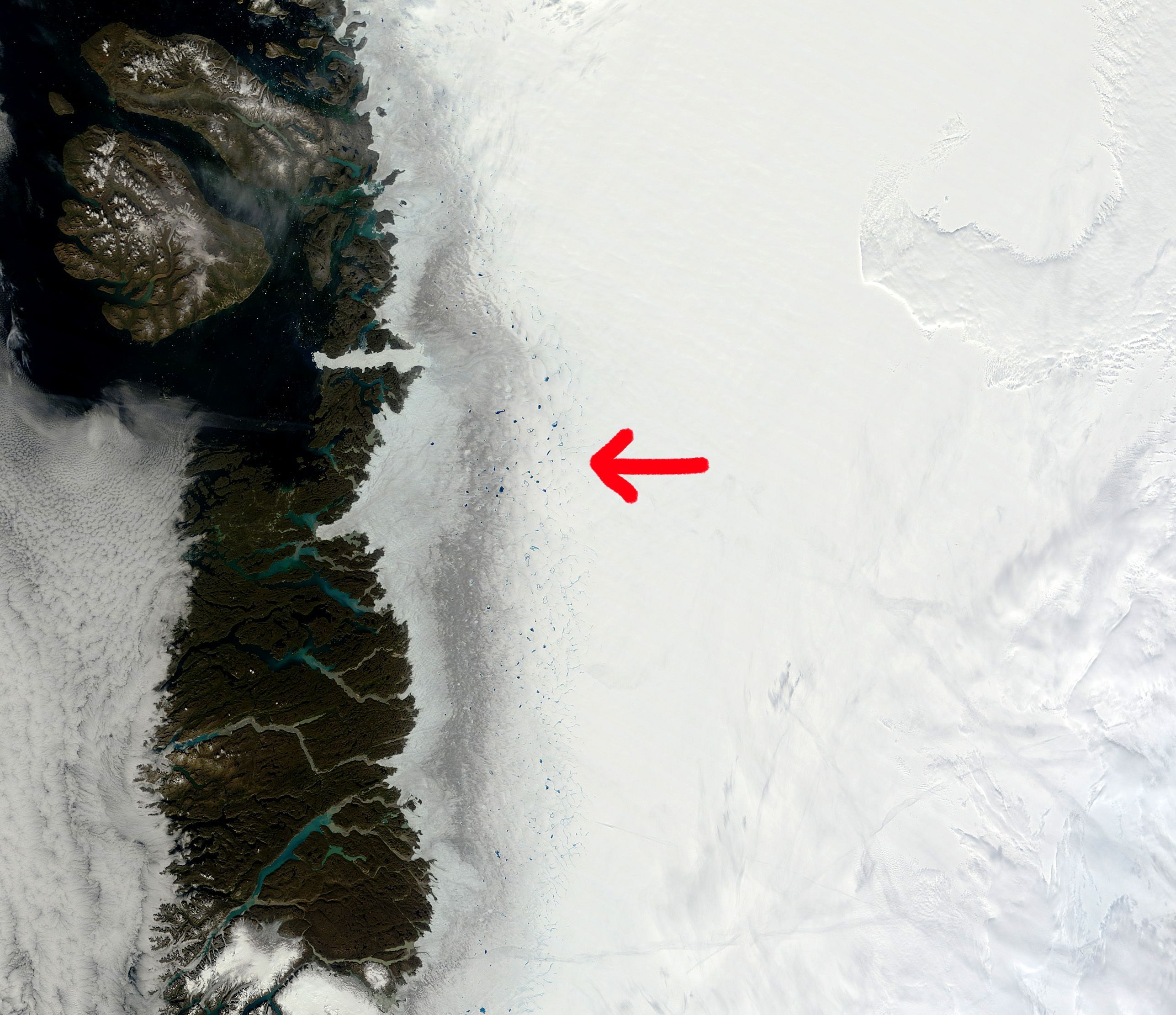The Dark Zone of Greenland ice sheet is a large continuous region on the western flank of the ice sheet; it is some 400 kilometers wide stretching about 100 kilometres up from the margin of the ice.
Some previous theories have attributed this darkening to water on top of the ice sheet – often seen as strikingly sapphire blue ponds, rivers and lakes. But a new study in Nature Communications provides a new hypothesis based on the character of the impurities on the ice surface itself.
“What we show is that the Dark Zone is covered in a finely distributed layer of dust, and black carbon, which provide nutrition for dark coloured algae. These are the main cause of the darkening.” says professor Alun Hubbard, the co-author of the study and professor at CAGE.
A dirt belt in the melt zone
The Dark Zone is a literally dirty belt of the melting area – the ablation zone – of the ice sheet. The darker this ablation zone is, the more of the sun’s energy it absorbs, and the faster the ice melts.
Read more at Centre for Arctic Gas Hydrate, Environment and Climate
Photo: Satellite images of the dark zone of Greenland ice sheet clearly show the impure ice in remarkable contrast to the pristine snow. Satellites however miss out on details in the composition of the impurities. CREDITS: MODIS / NASA


